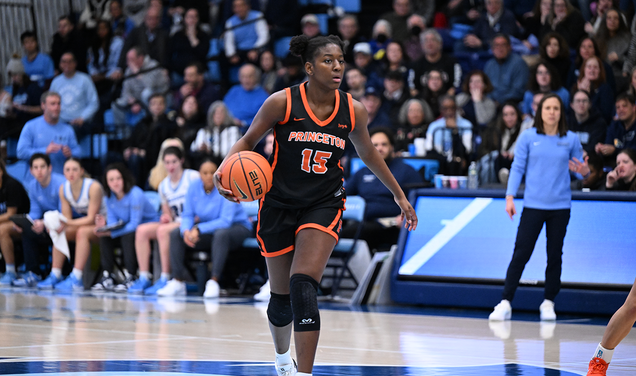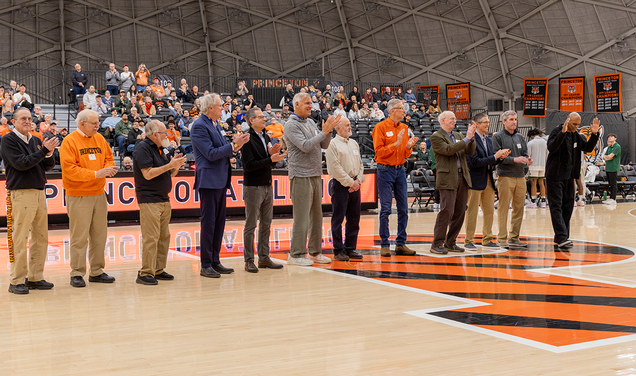
Watching athletes in motion at Princeton can take your breath away: hockey players streaking across the open ice, a basketball player rising for a breakaway dunk, sprinters dashing to the finish line at a track meet — take your pick. Nathan Crumpton ’08 tops them all.
Crumpton’s sport, skeleton, sends him down an icy track at speeds of 80 mph or more on a 75-pound, bare-bones sled. In the sharpest turns, five Gs of force press against his body. And the whole time, he’s lying headfirst, with his chin just inches above the ice.
“It feels a bit like a roller-coaster ride that I control,” Crumpton says, “mixed with the sensation of flying.”
It’s not all thrills, of course. Even a subtle mistake can leave you with an ugly array of bruises. (He keeps snapshots of the worst ones.) But the upside keeps him coming back: If Crumpton continues to rank among the top U.S. skeleton racers, as he has this season, he could be competing in the Winter Olympics two years from now.
Crumpton, like many of his fellow “sliders,” has a track-and-field background — he was an All-Ivy triple-jumper at Princeton — and his speed at the starting line allowed him to be competitive as he learned the subtle skills involved in steering the sled. This season, his fifth, brought a breakthrough: Just four months after undergoing knee surgery, Crumpton competed in the U.S. team trials and finished second, earning a coveted spot on the World Cup circuit.
When the ice thaws and the season ends, Crumpton will head back to an eclectic mix of day jobs, freelancing as a photographer, modeling, acting, and working part time in real-estate development. Leaving the workforce for six months at a time is a sacrifice, he says, but Crumpton makes that choice with a clear sense of the future in mind.
“As an athlete, I know that I have a limited window of time that I can use my body, when I’m going to be young enough and healthy enough to compete at that level,” he says. “I want to make the most of it.”









0 Responses